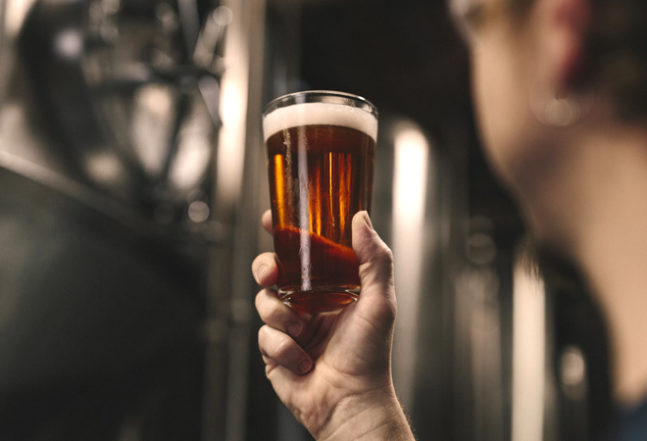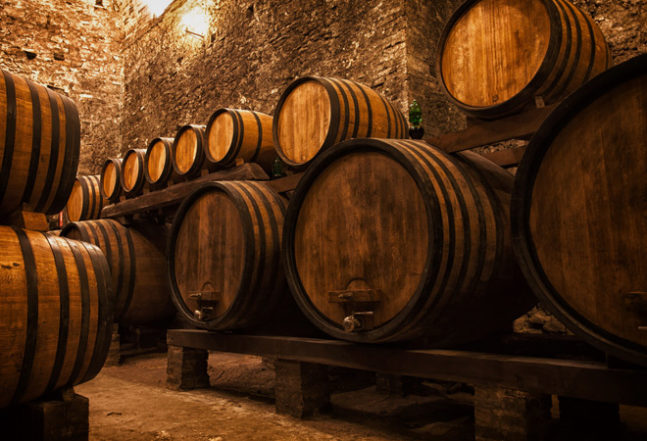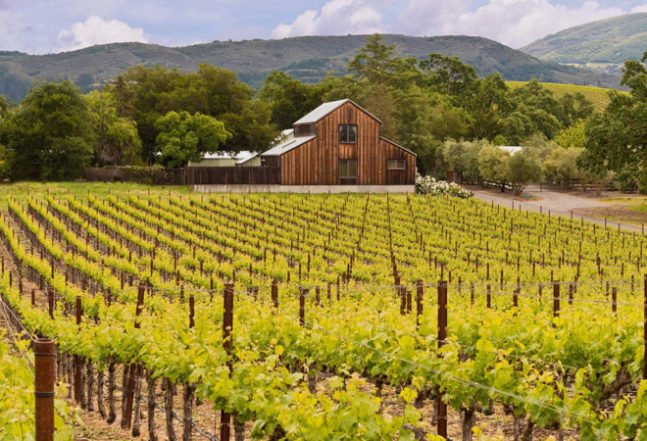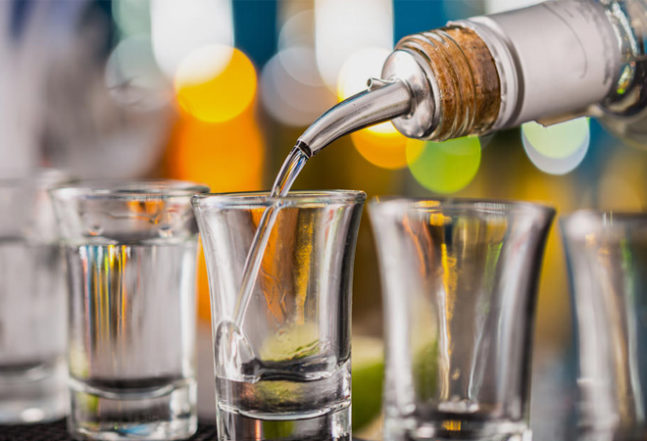Talking about climate change without going darkly pessimistic is difficult. Carbon emissions and their impact on the environment have been the subject of general scientific study for nearly two hundred years. The existence of man-made climate change was first hypothesized back in 1896 by Svante Arrhenius.
We’re not writing this to add to the political bashing present in the country. But let’s still be very clear about the situation. We’re well past the prevention point. The Earth is going to get warmer, all we can do is limit that warming.
That means there is an impact on our daily lives coming down the road and the impending shift is going to change plenty about life on Earth, not least of which is booze. Not that saving our spirits is the most important part of the global warming fight, but it’s a great example of exactly how deeply these changes are going to be felt. Like the rest of us, the alcohol industry is going to have to cope with new circumstances, which means our favorite beverages are going to feel the sting of a hundred years of essentially unregulated fossil fuel consumption. Maybe if we had known that at the time, we would have been less eager to burn up so many liquefied dinosaurs.

Beer
The biggest thing that’s going to hit beer is a potentially massive shortage in barley yields. Growing barley is a water intensive process that’s also highly sensitive to drought and extreme heat, two things global warming is expected to do. That means barley will be harder to produce, driving the supply down and prices up. Some regions will see production increase, like the United States, but don’t view that as a sign you don’t have to worry. With production falling or failing in the rest of the world, barley could become an international commodity. It’ll be exported before brewers can get their hands on it.
There is the possibility that beer will evolve into a product that reflects the changing climate. In 2012, Diageo, the company that owns pretty much every foreign beer or spirit you’ve ever heard of, started brewing using cassava. It’s a root vegetable similar to a potato and requires far less water than temperamental barley. Evidently the beer’s been relatively successful in Africa, particularly in Mozambique. The beer is called Impala and, the best we can tell, it tastes corny. This effort is currently focused in Africa, but if climate change continues unabated, expect similar solutions to come for our neck of the woods, as well as some of our favorite beers.
Let’s pile on and say hops are taking some hits here too. Hop growing regions in the Czech Republic, Germany, and Slovakia are all damaging the quality of the plant. Obviously hops grow all over the world, but this change poses a specific danger. If these areas fall victim to climate change, traditional beer styles, like the Czech pilsner, will change forever.
We’re potentially living in the golden age of beer for a couple reasons. We have the obvious craft beer boom, where everyone and their mother is out brewing unique beer to satisfy everyone else’s individual tastes. Then there’s the less obvious where we may be on the edge of a massive beer shortage caused by our own environmental abuse. We simply may not be able to buy and drink as much beer anymore. At least not beer that we’d recognize as a modern brew. Who knows how the Germans are going to react to all this.

Whisk(e)y
Whiskey is going to run into a lot of the same problems as beer. Barley is a traditional requirement for some, a legal requirement for others, habit for more, and completely ignored by others. Expect all of beer’s supply problems to be shared by the whiskey industry. While we’re all for whiskeys made from things that aren’t barley, we like our traditional grains too. We definitely don’t want to see them go anywhere.
Where whiskey’s unique challenges come are in the aging process. Much of the aging process for a good whiskey is affected by the weather, and a ton of our favorite bourbons, ryes, Scotches, Irish whiskeys, and Japaneses whiskies have built products and traditions around the established climates of their regions. When climate change, you know, changes the climate, that’s going to change a whiskey’s flavor. You want the temperature-induced expansions and contractions to cycle the whiskey through the wood of the barrel. If you don’t have them, your whiskey isn’t going to age the way you planned.
Before you think aging is the only challenge coming for bourbon, we should say the corn supply is in trouble too. The Midwest, more specifically the Corn Belt, is particularly susceptible to climate change. The area already experiences extreme weather, floods, and droughts, which are only going to get worse as climate change continues. Not only that, winter’s getting shorter, which interferes with corn’s ability to properly bud and prepare for the upcoming growth season. Then, when it finally comes time to grow, corn will need more water and produce smaller, less viable cobs.
For the scotch lovers among us, expect much more significant changes. Scotland (and Ireland, since some of this stuff is going to apply to the Emerald Isle as well) is a fine-tuned whisky producing and aging machine. Now that climate change is knocking on the front door, Scotland is staring down the barrel of a laundry list of dangers. There’s less water in the rivers, higher temperatures are putting production at risk, less snow (in some places) depletes another water source, more snow (in other places) poses structural and operational risks, rougher storms and higher tides disrupt supply lines to those famous Scotch islands, and grain prices and supplies have been all over the place lately.
The good news for Scotch is that Scotland is busting its ass to fight climate change. The bad news is Scotland is a small country and can only do so much.

Wine
We may not do a ton with wines here at Cool Material, but that doesn’t mean we’re not interested in them as a concept. For one, they’re great for a night in with the missus/miss/ms/mister. You can have a whole bottle of it and only get the second worst hangover you’ve ever had. Besides, people make such a big deal about the vineyards, and California is getting absolutely demolished by climate change, that we couldn’t help but get curious about the future of wine. Long story short, it’s not good. At the moment, wine looks a lot like Scotch, where a whole industry is about to change in ways it can’t even currently comprehend.
First, let’s talk about changes already being felt in the industry. In Bordeaux, people are experiencing what they’re calling the “bon problème,” a French way to describe something that’s good in the short term but is going to screw you in the long. Yields are currently increasing along with overall wine quality. At the same time, rising temperatures are forcing winemakers to use grape varieties they’ve never used before, fundamentally changing their famous blends. In 20 years, a Bordeaux could taste completely different than the traditional style.
More generally, as climate zones shift, wine-growing areas are going to change. The French, Italian, South African, and Australian regions consumers have come to know are going to either become far too hot to grow grapes or will have to change what kind they grow. These aren’t far flung times either. Young sommeliers training today are going to grow into an industry they won’t recognize. By 2050, 80 percent of modern vineyards in France, Spain, and Italy won’t produce viable grapes. That puts us in our 60s or 70s, watching regions completely lose their traditional product. It’d be like if, in 30 years, New York City just stopped being able to make bagels.
Climate change is also causing the production of higher ABV wines. Not because winemakers want to get you plastered, but because increased sunshine is causing grape vines to photosynthesize more sugars. Those sugars then ferment in the wine, making more alcohol. Bordeauxs are traditionally about 12.5 percent alcohol, but some modern measures come in at 16 percent. Zinfandels are experiencing a similar bump, boosting their ABV by up to 30 percent.
As counter-intuitive as it might be, this isn’t good for sales. Customer’s attraction to wine is similar to their attraction to beer. You can have two or three and still be a functioning adult, have three or four and get a good buzz, and go from there. In the same way you don’t spring for that Triple IPA every single time you drink, wine fans aren’t sprinting to the 16 percent Bordeaux. They want to be able to drink in moderation while also having that mean they don’t have to stop at one.
We should also note that many of these problems carry over to Cognac, as Rémy Martin, Hennessy and the like are all made from distilled wine.

Vodka
Just like every other alcohol, vodka is going to hit some supply problems. Global potato yields are predicted to drop, putting the traditional main ingredient of vodka at serious risk. For vodkas that aren’t potato based, the outlook isn’t much better. Grey Goose is made of wheat, but French wheat yields are predicted to drop by slightly more than 20 percent. Tito’s, a favorite of people who like quality products but not paying a lot for them, is made of corn and we’ve already covered what’s going to happen in the U.S. Corn Belt. There are so many supply and climate issues surrounding vodka and vodka cocktails, the Bloody Mary may soon become the purview of the rich instead of the poor and hungover.
So What Can Be Done?
The advantage distillers and brewers have over most other industries is a simple one. Since brewers and distillers are so involved in every step of their production, they’re already convinced global warming is humanity’s next big collective fight and they’re getting a jump on it. Plenty of companies have sustainability efforts going and are finding a surprising amount of success.
Sierra Nevada has refined almost every aspect of their brewing process, hitting 99.8 percent waste diversion, removing 95 percent of their organic waste from wastewater, and adding a number of different energy sources, including a few they produce themselves. If this sounds familiar, it’s because we just talked about how they’re one of the most ethical companies around.
In Puerto Rico, Roberto Serrallés is looking to take his distillery, Don Q Rum, to a completely closed loop process. The distillery was started six generations ago to take advantage of the enormous amounts of molasses produced by sugar plantations and refineries in Puerto Rico, so Serrallés’s effort is well within his family’s tradition of sustainability. He’s certainly finding some difficulty, but he’s currently solved more problems than he’s encountered, which is great progress.
Cristina Mariani-May of Castello Banfi, a winery in Tuscany, has one of the greatest approaches to combating climate change we’ve ever heard. Her father pretty much ditched all the damaging agricultural practices Italian winemakers confused with tradition. Instead, he focused on sustainability, which is what she does now, with crop rotation, on-site composting, and highly efficient irrigation techniques.
And for all the shit coming for vodka, drinkers have a fun way of preserving their favorite spirit. Finlandia Vodka (from Finland, who would have guessed?) has entered into a partnership with Protect Our Winters to fight climate change. They’re coming at it from the preservation of winter sports, but there’s no wrong way to fight against global warming. If saving your favorite beer, whiskey, or wine from climate annihilation, then fly that flag. We’ll be right there with you. We’ve gotten pretty used to having our bourbons and ryes a certain way and we absolutely don’t want to give that up. And who knows, drinking the good stuff might solve some big problems instead of causing them for a change.




